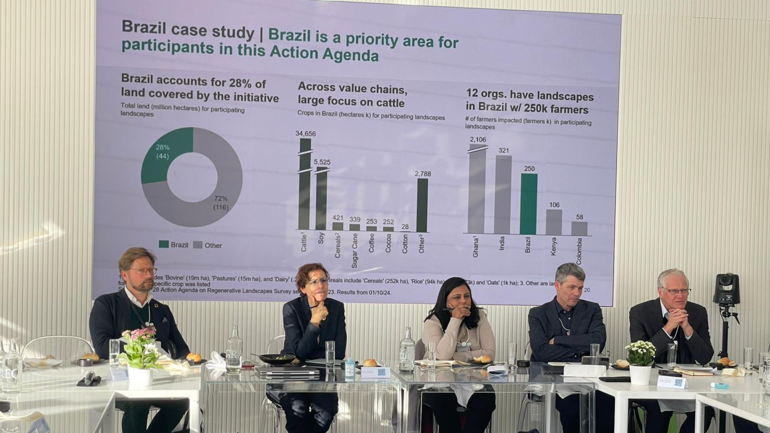It’s becoming impossible to ignore the rapid shifts taking place in the corporate landscape around the world. Ways of conducting business are evolving, as are the wide array factors that can help or hinder a company’s performance and success.
Ten years ago, the top global risks in terms of impact included only one risk related to environmental, social or governance (ESG) factors. But today, ESG risks account for most of the world’s top risks in terms of impact and likelihood, according to the World Economic Forum's Global Risks Report.
Given this rapid shift, many companies have faced crises that arise from ignoring ESG risks or opportunities.
"Black swan" events are more frequent and severe than before. Companies are finding that in order to remain resilient against new risks and seize new opportunities, they need to act fast.
Asset managers are catching on, too. Last month, Amundi, Europe’s largest asset manager, released new research into the impact of ESG criteria on investment portfolio performance. It showed two things. Firstly, institutional investors are boosting activity around active and passive ESG investing. Secondly, investments that incorporate ESG criteria outperform those who did not.
This is the beginning of the transformation, and it goes far beyond the concept of risk. Today’s businesses are dealing with completely different notions of "value" — whether they realize it or not.
The new tangibles
Before the 1990s, 80 percent of a company’s value was found in tangible assets such as plants, property and equipment. Now, up to 80 percent is represented by intangibles — brand, ideas, relationships, skills and resources.
We believe that it’s in the best interest of society to help companies truly understand the relationships between their business models and intangibles, as well as the full range of capitals — natural, social, human and financial capital — because understanding the relationship should ultimately should lead to better corporate decision-making.
If executives and management have reliable and relevant information about their risk profiles in the context of the new tangibles, they’ll be more capable of making the decisions that will deliver the product and service innovations that will contribute to a flourishing society.
What’s the next step for business?
Manage risks, understand impacts and dependencies and use sustainable finance.
While it’s a tall order, tools are out there to help companies adapt as the market shifts to reward companies who manage risks well and who pay special attention to the new tangibles.
Together, in a historic partnership, WBCSD and the Committee of Sponsoring Organizations of the Treadway Commission (COSO) created the first guidance for Applying Enterprise Risk Management to ESG-related risks. The guide is designed to help organizations worldwide respond to the increasing prevalence and severity of ESG-related risks, ranging from extreme weather events to product safety recalls.
Companies also should make the most of innovative sustainable finance solutions.
Most of the world’s top companies use the original COSO framework for enterprise risk management, so supplementing it with a guidance specifically for ESG risks is an easy win for companies who already use the standard for managing their other risks. Companies should be proactive about using this approach to future-proof their business models in today’s shifting world.
Additionally, the newly launched Social and Human Capital Protocol, as well as the Natural Capital Protocol, help companies understand their impacts and dependencies on nature, people and society.
This is important because credible, comparable and broadly accepted approaches on natural, social and human capital are essential in the transition to a more sustainable world. These tools are helping demonstrate true corporate performance to key stakeholders, while ensuring a continuous movement towards universally just employment and community practices and a healthier natural environment.
Companies around the world need to realize the benefits of better understanding their interactions with nature, people and society, and the true value they create for all stakeholders.
Finally, companies also should make the most of innovative sustainable finance solutions. Through advancements in sustainable investing, companies can lower their cost of debt and enhance returns. Olam, Danone and Phillips, for example, have linked ESG performance to loan prices and interest rates, in collaboration with ING, BNP Paribas and others.
Aside from lowering their cost of capital, companies who consider ESG risks and opportunities also benefit from better access to financing, customer satisfaction and loyalty and better employee relations.
How do we move beyond the sustainability department to the whole company?
Partnering with risk, compliance, HR, finance, investor relations and sustainability professionals will be key for implementing the kinds of solutions needed to improve decision-making and move towards more sustainable outcomes.
The CFO and investor community also have a crucial and pivotal role to play in responding to these changes, gathering, processing and acting on information that is critical to their success, enabling leaders to thrive in a new business landscape.
The discourse must shift to include each of these elements: new risks; new opportunities; the new tangibles; and the role of the CFO and investor.
The first step is reaching out to folks in different departments. After all, good business always involves a frank conversation.
This was originally posted on https://www.greenbiz.com/









